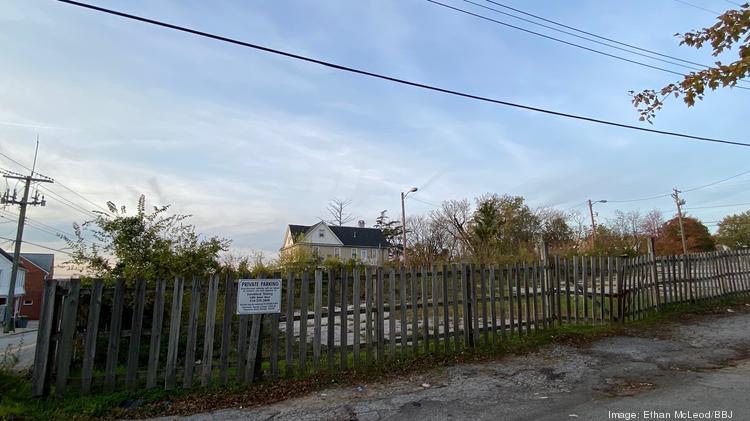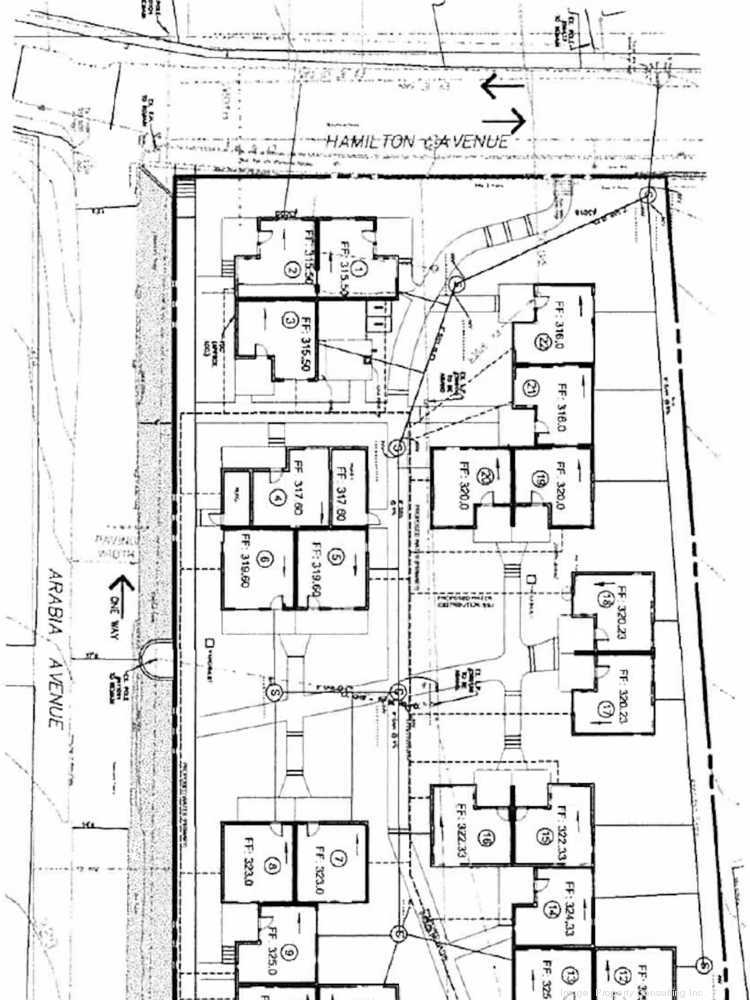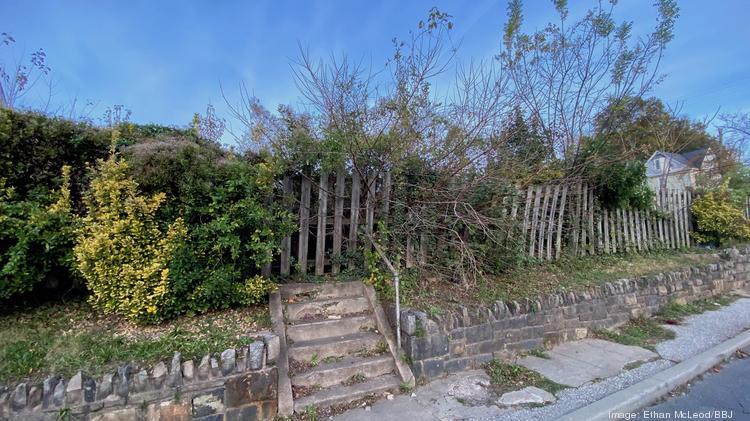

Developer Sam Polakoff plans to build a village of 22 tiny homes on two currently vacant lots at 3018-3020 Hamilton Ave. in Northeast Baltimore. ETHAN MCLEOD/BBJ

By Ethan McLeod – Associate Editor, Baltimore Business Journal
Nov 6, 2020, 11:54am EST
Northeast Baltimore’s Hamilton neighborhood could soon have a first-of-its-kind residential development for Baltimore City — one that’s tiny in stature but large in vision.
Sam Polakoff, principal of Property Consulting Inc., presented plans this week to neighbors for a tiny house village to be built at 3018-3020 Hamilton Ave, about two blocks southeast of Harford Road. The two properties, consisting presently of partly overgrown and mostly paved lots, would be redeveloped to hold a half-dozen clusters of stationary tiny houses, most of them in groupings of four or five units. Sizes would vary, but a four-unit cluster would number around 1,500 square feet in total.

Enlarge A site plan presented by developer Sam Polakoff for a planned 22-unit tiny house village at 3018-3020 Hamilton Ave., with groupings of three, four and five homes as well as on coupling. PROPERTY CONSULTING INC.
Each tiny house would be a market-rate rental — Polakoff fielded an estimated, if not final cost of about $1,000 per month for each — and effectively function as a studio apartment with a bedroom, a bathroom, a kitchen, its own washer and dryer and, in some units, a lofted space for a second sleeping area. Homes would have front and/or back porches, and the community would be linked together by walking paths and have shared amenities, potentially including community gardens and a fire pit.
Polakoff said he sees tiny homes, generally considered to be 400 square feet or less, as a yet-untapped affordable housing tool in a time when it’s in high demand — particularly after the economic fallout that has accompanied Covid-19.
“Tiny homes are sort of a perfect market answer to people who want private space, their own space, and outdoor space,” Polakoff, whose firm developed the new 16-unit SoHa Union mixed-use complex in nearby Lauraville, told members of the the Glenham-Belhar Community Association during an online meeting Wednesday. “They are relatively affordable in a time when people are worried about economic conditions.”

Enlarge A view of overgrown brush at a 3018 Hamilton Ave., the site of a planned tiny house village near the commercial main strip of Hamilton in Northeast Baltimore. ETHAN MCLEOD/BBJ
The site plans presented to Northeast Baltimore residents were the first update the community has received since Polakoff shared the plans in spring of 2019. Anne Yastremski, president of the group representing residents in a territory bordered by Glenmore and Hamilton avenues and Belair and Harford roads, had said prior to this week’s update that at the 2019 gathering, neighbors had more than 100 questions mostly concerning infrastructure and parking, the basic functionality of the HGTV-popularized tiny homes and who these dwellings are being built for.
Polakoff and Joshua Greenfeld, who works for Property Consulting and also serves as vice president of its parent company, Cormony Development, had answers Wednesday. The said the planned 22 tiny houses will not be built on wheels and will each be hooked up to public sewer, water and electric utilities. The village would likely have a central waste-disposal room with a covered dumpster, they said.
The properties, both acquired by a subsidiary of Polakoff's firm in January 2019 for $150,000 apiece, are currently zoned OR-1, which allows for "a mix of office and residential uses." Polakoff and Greenfeld said the 22 units would fill only about a third of the density permitted there.
For parking, Property Consulting has worked with the city on plans to redevelop a strip of the road along Arabia Avenue by installing a sidewalk and a parking lane, adding roughly a dozen spaces. That will require an application to the Baltimore Municipal Zoning and Appeal Board, which Polakoff hopes to submit before the end of the year.
As for who would live there, the developer said the dwellings are suited for individuals, couples or single parents with a child. He and Greenfeld said they hope to add some ADA-accessible units for aging tenants.